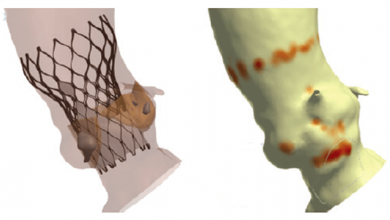Search results
PROMOTED
Author(s):
Nicolas M Van Mieghem
,
Kendra J Grubb
,
David Hildick-Smith
,
et al
Start date:
Mar 26, 2024
Author(s):
Thijmen W Hokken
,
Joana M Ribeiro
,
Peter P De Jaegere
,
et al
Added:
3 years ago
Evidence-based medicine is the foundation of contemporary clinical practice and results in better clinical outcomes than experience-based medicine.1 Meta-analyses of homogenous randomised controlled clinical trials are the pinnacle of evidence-based medicine and the backbone of the highest recommendations in clinical guidelines.
These randomised trials pertain only to the selected patients who…
View more
Author(s):
Kay Everett
Added:
2 months ago
Author(s):
Lavinia Gabara
,
Jonathan Hinton
,
Julian P Gunn
,
et al
Added:
3 years ago
The optimal assessment and management of patients presenting with recent onset chest pain is achieved by acquiring information about the coronary anatomy and physiology, enabling decisions to be made based upon evidence of ischaemia at a patient-level and at lesion-level. There are robust data indicating that the visual assessment of stenosis severity alone does not provide enough information…
View more
Author(s):
Ji Hyun Lee
,
Bríain ó Hartaigh
,
Donghee Han
,
et al
Added:
3 years ago
Coronary computed tomography angiography (CCTA) is a noninvasive tool capable of directly visualising the coronary anatomy with high sensitivity and negative predictive value (NPV) for coronary artery disease (CAD) compared to invasive coronary angiography (ICA).1,2 Recent innovations in computed tomography (CT) technology have led to the rapid development of CCTA and its selection as an anatomic…
View more
Author(s):
Vikas Kapil
,
Ajay K Jain
,
Melvin D Lobo
Added:
3 years ago
Up to one-in-five treated hypertensive patients are deemed to be treatment resistant1-3 (on at least three different anti-hypertensive medication classes, including a diuretic)4-6 and have high cardiovascular risk.7-9 There is a paucity of high-quality evidence to suggest that the addition of a fourth line (or fifth, sixth line, etc.) medication is likely to bring either hypertension under…
View more
Author(s):
Demosthenes G Katritsis
,
Ioannis Pantos
Added:
3 years ago
The functional severity of atherosclerotic coronary lesions is the single most important prognostic factor in patients with documented coronary artery disease (CAD). Assessment of the haemodynamic significance of coronary artery lesions by invasive fractional flow reserve (FFR) measurement now has an I-A indication by the European Society of Cardiology (ESC) to identify haemodynamically relevant…
View more
Author(s):
Cameron Dowling
,
Robert Gooley
,
Liam McCormick
,
et al
Added:
2 years ago
Author(s):
Jonathon A Leipsic
,
Jonathan Weir-McCall
,
Philipp Blanke
Added:
3 years ago
Coronary CTA has rapidly gone from a test with potential to be considered a first-line test for patients with stable chest pain.1 It provides robust ability to exclude atherosclerosis and coronary artery stenosis and more recently has been shown to inform and guide clinical treatment making in a fashion that enables a reduction in myocardial infarction when compared to traditional stress testing…
View more
Robotic PCI
Author(s):
Arif A Khokhar
,
Andrea Marrone
,
Konstantinos Bermpeis
,
et al
Added:
4 months ago
Article

















